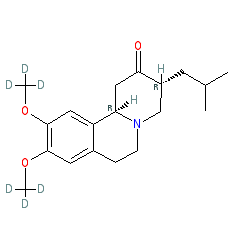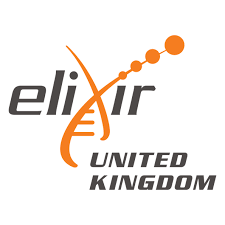GtoPdb is requesting financial support from commercial users. Please see our sustainability page for more information.
|
Synonyms: Austedo® | SD-809 | SD809 | tetrabenazine D6
deutetrabenazine is an approved drug (FDA (2017))
Compound class:
Synthetic organic
Comment: This is an orally available, deuterated analogue of tetrabenazine which can be administered in lower doses and in a simplified dosing regimen. Deutetrabenazine is the first ever deuterated drug to be approved.
In drug discovery, replacing hydrogen atoms in drug compounds with deuterium (deuteration) is a technique employed to inhibit degradation of the drug and its active metabolites. The presence of the deuterium atoms attenuates CYP2D6-driven metabolic breakdown of the compound. This effects an increase in circulating half-lives and improves the duration of therapeutic effect and decreases the dose required to achieve therapeutic concentration [4]. |
|
|||||||||||||||||||||||||||||||||||
| No information available. |
Summary of Clinical Use  |
| Received US FDA approval in April 2017 as a treatment for chorea (involuntary movements) arising from Huntington's disease (HD). Results from Phase 3 evaluation of the efficacy, safety and tolerability of deutetrabenazine are published in [2,5-7] (and see NCT01795859). In September 2017, deutetrabenazine received FDA approval for the treatment of tardive dyskinesia (TD; Phase 3 findings are published in [1] and [3]), joining valbenazine as an approved drug for this indication. |
Mechanism Of Action and Pharmacodynamic Effects  |
| Like tetrabenazine, deutetrabenazine inhibits the vesicular monoamine transporter 2 (SLC18A2). This decreases the amount of the monoamine neurotransmitters serotonin, norepinephrine, and dopamine stored in presynaptic vesicles, and results in increased metabolism of the extra-vesicular neurotransmitters by monoamine oxidase. This leads to an net reduction in catecholamine-driven neuro-activity. |
| Clinical Trials | |||||
| Clinical Trial ID | Title | Type | Source | Comment | References |
| NCT01795859 | First Time Use of SD-809 in Huntington Disease | Phase 3 Interventional | Teva Pharmaceutical Industries | ||







